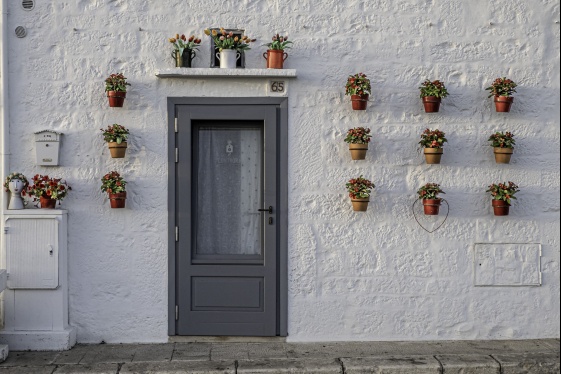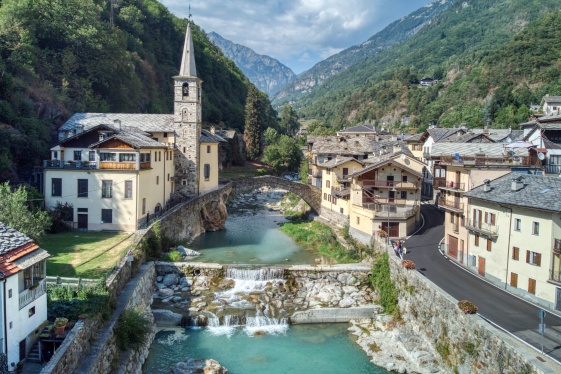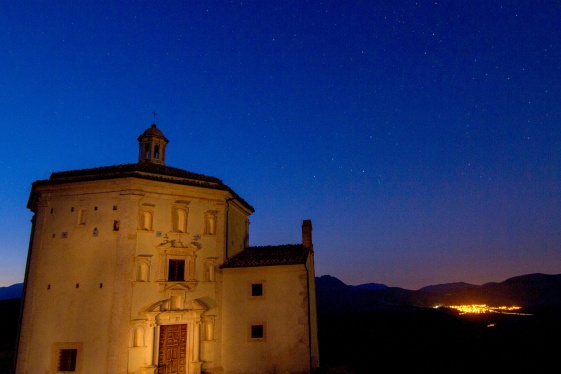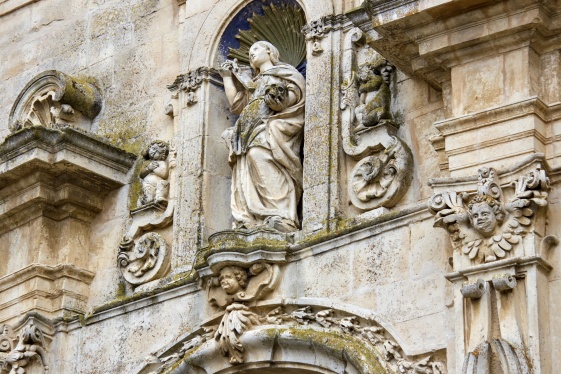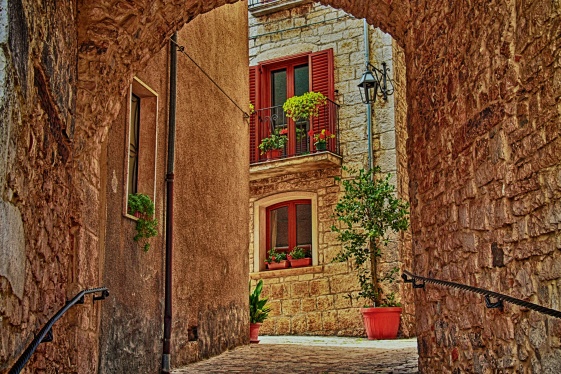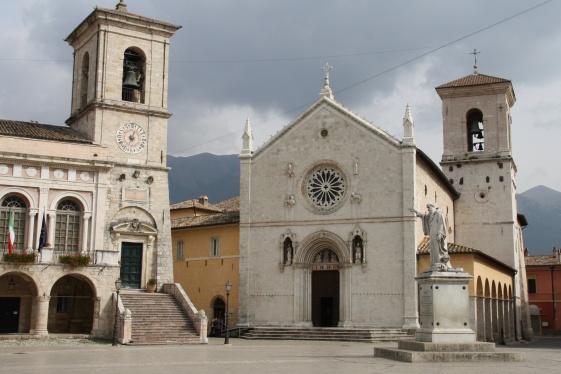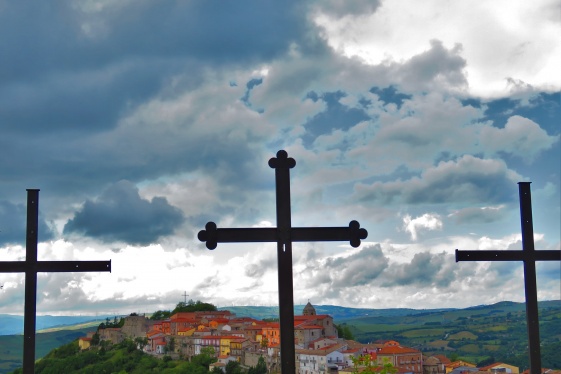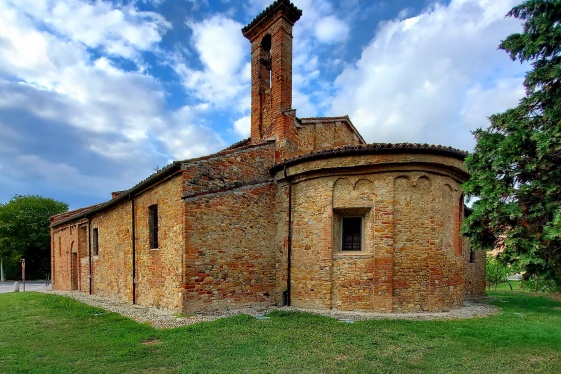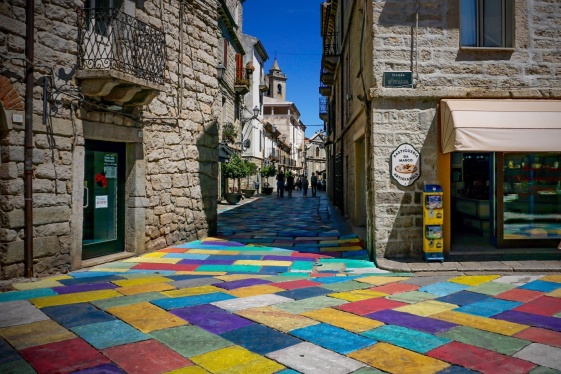
I borghi più belli d'Italia
The goal of our Club, which was not created merely as an integrated tourist promotional operation, is to guarantee - through protection, restoration, promotion and utilization - the preservation of a great heritage of monuments and memories that would otherwise be irretrievably lost. http://www.borghitalia.it/
Italian little Italies: Locorotondo, circular splendor
The name derives from the old latin word Locus Rotundus, rounded place. Already at the beginning of the 13th century, it was placed on a hill peak surrounded by a walled ring, the village assumed the circular shape that gave it its name, which also appeared in various documents in the following centuries. Locorotondo is the most beautiful balcony i...
Italian little Italies: Fontainemore, Alpine village
The parish church of Sant’Antonio Abate (St. Anthony Abbot), built in 1494 by head master Antonio Goyet, has several interesting artistic, historical and architectural features, including the chancel with round apse dating from the 15th century, the ribbed vault with stone ribs covered with lime and a rose window in the center bearing the Vallaise...
Italian little Italies: Castel del Monte, Shepherd’s Capital
Hanging between the peaks of Gran Sasso and Tirino Valley, a miracle of stone takes its form right before our eyes: it is Castel del Monte, represented by a big bell tower. Here, the time of memory is sweeter then elsewhere and it materializes itself immediately after entering the village in admirable pieces of popular architecture such as old port...
Italian little Italies: Buccheri, Wellness Oasis of the Iblei
On Colle Terreo the remains of the Norman castle can be visited, of which some important evidence remains today. Not far away, among the elements of religious architecture, is the S. Antonio Abate Church, which dominates the town from the top of a scenic flight of steps (built in 1911); inside the church interesting paintings by G. Borremans from 1...
Italian little Italies: Brisighella, In the Hills Amid Fog and Broom
The village of Brisighella is set against a chalky hill dominated by three selenite cliffs, upon which the Fortress, the Clock Tower, and the Sanctuary of Monticino stand. On the other side it was defended by two concentric lines of walls which can still be seen in the buildings which have incorporated them. Inside the historic quarter, the mediev...
Italian little Italies: Oratino, The loner of Sannio
The talented local craftsmen of Oratino could express their art mainly thanks to the patronage of the Dukes Giordano (VI-VII century). Portals, balconies, balustrades of the aristocratic houses, as well as the interior of the churches represent the noble work by blacksmiths, stonemasons, gilders, glaziers and painters. A historian described Oratino...
Italian little Italies: Norcia, The Sacred and the Profane
The historic core of Norcia is enclosed by 13th-century walls which form a unique heart shape. Along the perimeter the eight ancient village gates can be seen, which have preserved the names and characteristics of the past, together with the medieval towers. Entering from the Roman Gate and walking along the 19th-century Corso Sertorio, the visito...
Italian little Italies: Savignano Irpino, a cozy retreat in the Cervaro Valley
Your visit may start from the Guevara Castle, a defensive castle erected during the Longobard era (VII-VIII cent.), turned into a Fortress by the Normans in the XII cent. and then into a noble palace under the Guevara rule. The restoration carried out by the Municipality administration in 1990 revealed a layer of ash of the last eruption of the Ves...
Italian little Italies: Volpedo, on Pellizza’s paintbrushes
Someone would be surprised to find that Volpedo is considered among the most beautiful towns in Italy. In fact, the country at first sight seems disordered, not very compact in its urban structure of the medieval imprint(still clearly visible) due to some construction interventions that have changed original physiognomy. From the other side, this...
Italian little Italies: Maratea. A village suspended between sky and sea
The most important monument to see in Maratea, the beautiful Basilicata village in the Potenza province, is the Statue of the Redeemer or Christ the Redeemer, a sculpture placed on the top of Mount San Biagio. It was made with a special mixture of cement mixed with flakes of Seravezza marble by Florentine artist Bruno Innocenti between 1963 and 196...
Italian little Italies: Ronciglione, A two-story town
"La Rocca" erected in the Middle Ages by the Prefects of Vico to guard the only natural access to the town, it was the prerogative of the Counts of Anguillara, Della Rovere and Farnese families and underwent major changes, particularly between 1475 and 1480 with the renovation ordered by Pope Sixtus IV and entrusted to the Florentine architect Giov...
Italian little Italies: Tempio Pausania, the city of stone
Tempio Pausania, the "city of stone," is a jewel set in Mount Limbara. The ideal place to breathe pure mountain air less than 30 minutes from the sea and the island's most beautiful beaches. The old train station from the 1930s, with paintings by painter Giuseppe Biasi, is the arrival point of the "little green train" that crosses Gallura. With its...



